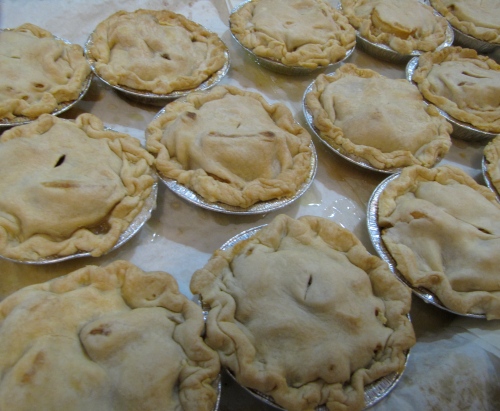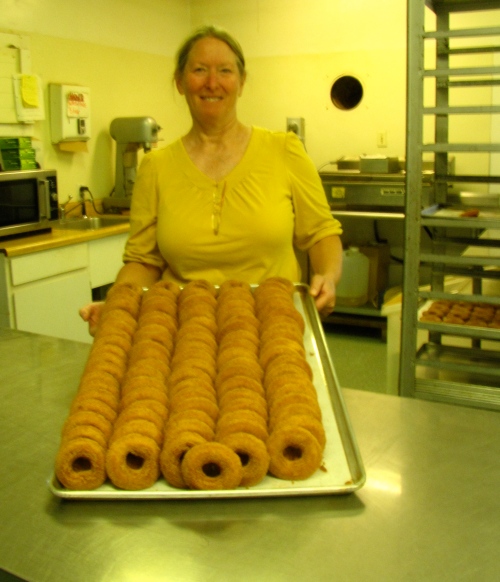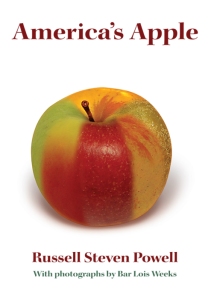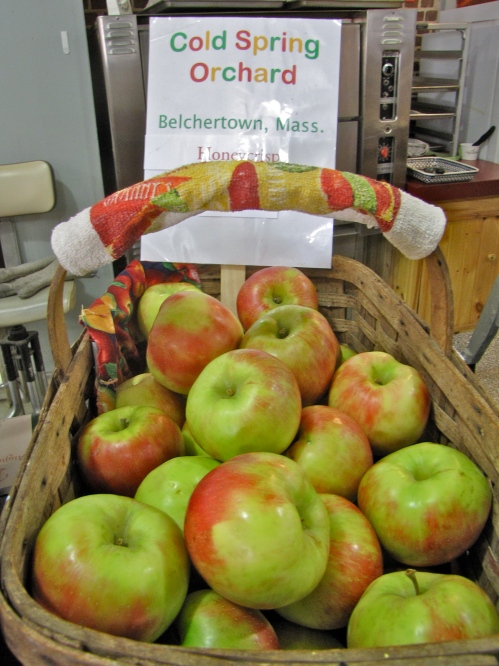
Honeycrisp apples from Cold Spring Orchard In Belchertown, Massachusetts, on display at the New England Apple Association booth in the Massachusetts Building at the Eastern States Exposition (the “Big E”) in West Springfield, daily from 10 a.m. to 9 p.m. through Sunday, September 30. (Bar Lois Weeks photo)
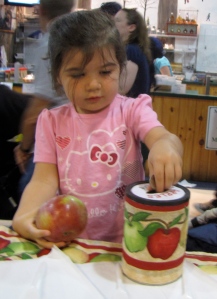
Aryana pays for her Cortland apple at the New England Apple Association booth in the Massachusetts Building at the Big E. New England’s largest fair continues daily through Sunday, September 30. (Bar Lois Weeks photo)
IF THERE IS such a thing as a rising superstar in the apple world, it is Honeycrisp. This variety has been grown commercially for just 20 years but is fast becoming famous for its distinctive texture — crispy but yielding, neither hard nor soft, and full of juice — and flavor that veers more to the sweet than tart. A good Honeycrisp virtually explodes in your mouth, and leaves both apple lovers and growers across the country yearning for more.
But a good Honeycrisp can be hard to find. The trees are susceptible to several diseases, for one thing. Honeycrisps do not always store well, either. The fruit’s color is highly variable, from almost solid red to pink-striped green. Its flavor, too, can be uneven, depending on where it is grown. But a good Honeycrisp is a sensory sensation, worth the trouble for the grower to cultivate, worthy of the apple lover’s devotion.
The good news for New Englanders is that Honeycrisp generally grow well in McIntosh country, preferring our hot summer days and cool autumn nights. They usually ripen in mid-September, but this year the crop is early, and they have already been available at a number of orchards.
If you have been fortunate enough to have eaten an outstanding Honeycrisp before (or if you have never had one), now is the time to find them fresh from the tree. If you have tasted one and don’t understand what all the fuss is about, give it another try. Once you have bitten into a great Honeycrisp, your taste buds will never be the same.
DESPITE ITS EXCELLENT eating qualities, Honeycrisp almost never came to be. The original Honeycrisp tree, planted at the University of Minnesota in 1961, was discarded in 1977 after suffering damage over the winter, leaving just four unnamed offspring behind. These, too, were nearly thrown away, seen as unexceptional (although remarkably there was no mention of flavor and texture in their initial evaluation).
But at the last minute, apple breeder David Bedford, who came to the university in 1979, reversed his original order to destroy the young trees, deciding to give them another try. The first mention of Honeycrisp’s flavor and texture were not recorded for another four years, but once he finally tasted the fruit in 1983, Bedford realized Honeycrisp was an exceptional apple.
Honeycrisp was first thought to be a cross between Macoun and Honeygold, but DNA testing proved otherwise. Now, its parents are listed as Keepsake, another apple developed at the University of Minnesota in 1978 (which has Northern Spy as one of its parents), and “unknown.” Honeycrisp’s other parent has never been identified, and probably never will be; possibly it is an unnamed seedling that was discarded like the original Honeycrisp tree.
The fascinating story of Honeycrisp’s history, as well as the changes it has spawned in the apple industry (including a controversial trend to trademark new apple varieties as a means to control their quality and quantity) is told in the book America’s Apple by Russell Steven Powell, with photographs by Bar Lois Weeks. To learn more, including how to order, visit americasapple.com.
